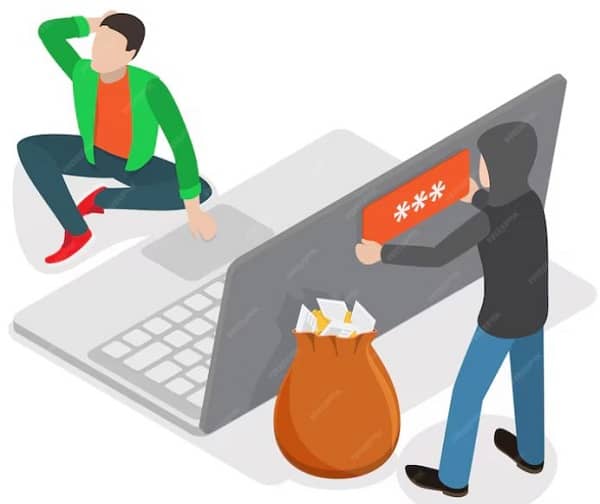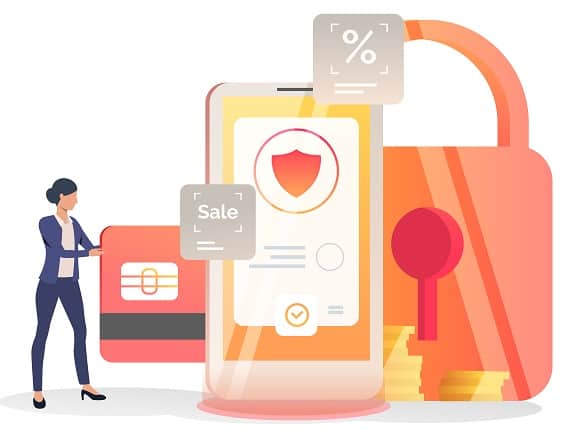Triangulation fraud in ecommerce may be described as a transaction that’s too good to be true. These days, “a good deal” could refer to an online transaction wherein you might spot a desirable product for a desirable price (i.e., cheaper than expected).
Who wouldn’t want to pay much less for a product that’s generally pricey? The trouble with something that’s “too good to be true” is that it usually is — especially in the Philippines.
The shopping scam rate in the Philippines tops the list in Asia at 35.9%, followed by China and Indonesia, according to the Global Anti-Scam Alliance, Gogolook. Turns out, a third of Filipinos surveyed have been duped by some type of scam or fallen prey to fraud in ecommerce.
One of these scams is called triangulation fraud.
Also read: How to Avoid Bogus Buyers
What is triangulation fraud?
Ecommerce has revolutionized the way we shop, bringing convenience to our fingertips. However, with the rise of online transactions, the threat of fraud has also increased.
Triangulation fraud is when a legitimate shopper buys a product that a malicious person, posing as a seller, has acquired through a stolen credit card. It’s a deceptive practice that comes with a significant risk to both ecommerce sellers and customers.
How triangulation fraud scheme works
Triangulation fraud exploits the process of online transactions involving a buyer, a seller, and a third-party shipping address. The goal is to use stolen credit card information to make purchases without revealing the fraudster’s actual location.

For example, a customer finds an online electronics store offering premium smartphones, laptops, and other gadgets at significantly discounted prices, not knowing it’s a fraudulent shop. The discovery encourages the customer to buy, and the fraudster uses stolen credit card information to buy the same products from a legitimate retailer, having them shipped to the unsuspecting customer.
Here’s how a typical triangulation fraud scheme works:
1. Setting up a fake online store
Scammers create a fake online store, usually selling popular or high-demand products at attractive prices on third-party sites, like eBay or Amazon. The store is designed to appear legitimate, complete with product listings, payment options, and contact information.
2. Attracting buyers
To lure unsuspecting customers, fraudsters use various marketing techniques, such as social media ads or email campaigns. The goal is to drive traffic to their fraudulent online store.
3. Customer places order
A customer interested in a product then places an order on the fake online store. During the checkout process, they provide their payment details, including credit card information, billing address, and sometimes a shipping address.
4. Fraudster’s interaction with legitimate retailer
Simultaneously, the fraudster accesses a legitimate online retailer and places an order for the same product. However, they use the stolen credit card information and provide the customer’s stolen shipping address.

legitimate sellers.
5. Legitimate retailer ships product
The legitimate retailer, unaware of the fraudulent activity, ships the product to the customer’s stolen shipping address. The fraudster ensures that the product arrives without any issues.
6. Customer receives product
The unsuspecting customer receives the product they ordered from the fake online store, leading them to believe that the transaction was legitimate.
7. Chargeback and discovering fraud
Once the credit card holder realizes the unauthorized transaction and disputes it, a chargeback is initiated. The legitimate retailer is left to deal with the financial repercussions, while the fraudster remains hidden.
What are the effects of triangulation fraud?
1. To sellers
Triangulation fraud can have severe financial repercussions for ecommerce sellers. When fraudsters exploit the system, sellers often find themselves bearing the financial burden of chargebacks and refunds.
Additionally, the negative impact on a seller’s reputation can result in decreased customer trust and loyalty. Remember, it takes years (even decades) to build a reputation and mere minutes to ruin it.

2. To customers
Customers do receive genuine products with their budget purchase because the fraudsters buy those products from genuine retailers/brands. But the legitimate buyer becomes an unwitting participant in a fraudulent scheme, unknowingly playing the part of what’s called a “money mule.”
By not being aware of triangulation fraud, the customer ultimately perpetuates the scheme that damages thousands of other customers. When you do become aware of it, as a buyer, report the fraudulent transaction because it may stop fraudsters from stealing more credit card information and scamming more businesses.
What are the signs of triangulation fraud?
This type of fraudulent ecommerce transaction does affect merchants more than customers. The cost may be too much when you’re a small business owner or a startup.
But how do you track this form of scheme that tricks businesses and customers to turn a line of credit into cash?
1. New account with multiple orders/purchases
Be cautious of newly created accounts that make multiple orders in a short period. Fraudsters often exploit new accounts to carry out their deceptive activities.
2. Invalid customer information
Verify customer details thoroughly. If the provided information appears incomplete, inaccurate, or suspicious, it may be a red flag for potential triangulation fraud.
3. Mismatched billing and shipping addresses
Check for inconsistencies between billing and shipping addresses. Fraudsters may use different addresses to avoid detection.
4. Unusual shipping destinations
Keep an eye on orders that are being shipped to uncommon or unexpected locations. Triangulation fraud often involves diverting products to third-party addresses.
5. High volume but small-value transactions
Fraudsters often make numerous low-value transactions to remain under the radar. Be wary of unusually high transaction volumes with minimal monetary value.
6. Unusual purchasing patterns
Monitor for irregular purchasing behavior, such as an abnormal frequency of orders or purchases made during odd hours. These patterns may indicate fraudulent activity.
How to protect your business from triangulation fraud
Yes, no system is foolproof. But without some form of anti-fraud strategy, you increase the risk of fraud cutting into your profits and hurting your reputation.
Protect your business with the following steps:
1. Implement robust authentication processes
Strengthen user authentication by employing multi-factor authentication (MFA) to verify the identity of customers during the account creation and login processes.
2. Monitor and analyze customer behavior
Utilize advanced analytics tools to detect unusual purchasing patterns and flag suspicious transactions for further investigation.
3. Verify customer information
Conduct regular checks on customer information, ensuring that details, such as addresses and contact numbers, are valid and consistent.
4. Employ address verification systems (AVS)
Use AVS to cross-verify billing and shipping addresses, reducing the risk of triangulation fraud by detecting any mismatches in details.
5. Educate staff and customers
Educate both your staff and customers about the risks associated with triangulation fraud. Encourage customers to be vigilant and report any suspicious activity, while ensuring that your staff is well-trained to identify potential fraud.

Cut out the fraudulent “middleman”
Triangulation fraud is a serious threat to the integrity of your ecommerce business. By understanding the impacts, recognizing the signs and implementing preventive measures, you can safeguard your business and your customers from falling victim to this deceitful scheme.
Stay vigilant, informed, and secure your ecommerce enterprise against the ever-evolving landscape of online fraud.
More security tips for your online business:
Today’s Biggest Threats to Ecommerce Websites
Take These Steps to Avoid COD Scams
Earn Your Blue Checkmark on Social Media






